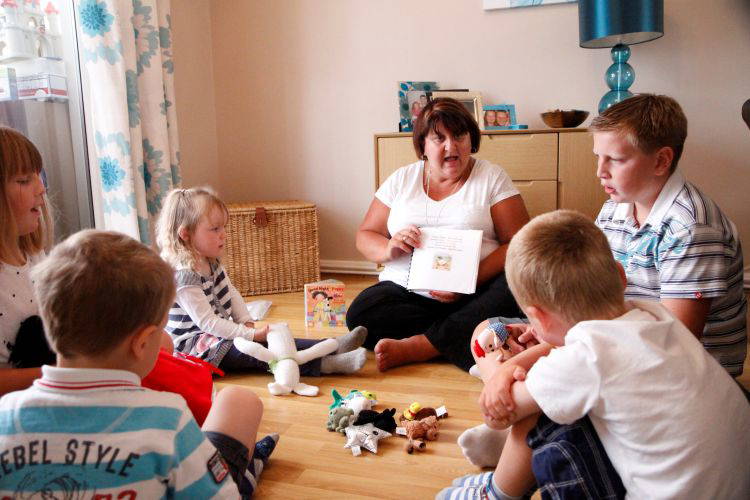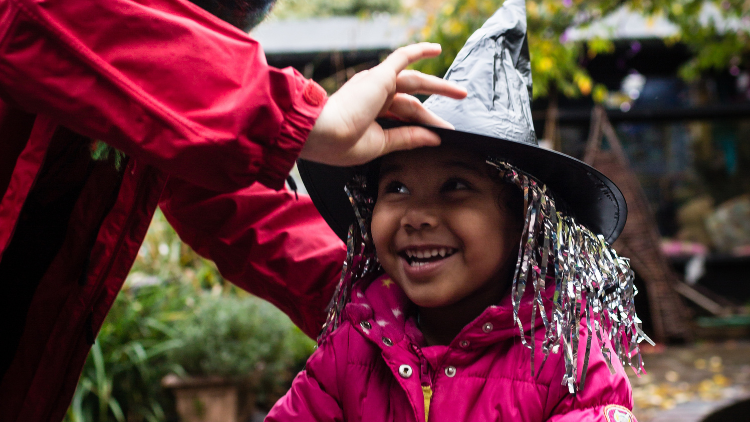“The arts make us who we are. They create communities. It’s through self-expression and shared experience that we’re able to define ourselves. The arts communicate feelings and shape ideas. They comment and they invite comment. They lead the way, and they show us where we’ve been. They help us think."
Arts & Minds | Putting Creativity At The Heart of The Curriculum
Creativity in wraparound settings
The destruction of creative education combined with excessive screen time dominating children’s lives3 means now more than ever children need opportunities to ignite creativity and imagination. That’s where your wraparound provision comes in!
Giving unstructured, non-prescriptive time and space for children to explore their creativity outside of school, not only goes some way to fill the void, but also gives the opportunity for self-expression that supports children’s emotional wellbeing.
“In a complex, changing world, and in the face of increasing mental health challenges, giving children the space and skills to express themselves, through all art forms, as a way to understand themselves, others and the world around them, is a key aspect of a child’s right to a rich education”4
There are many different ways children can be creative. Some children will show keen interest in one or more ways, but others might be timid or lack confidence to try new or different experiences. Gentle encouragement, without pressure, along with the freedom to explore in their own way can help those shy children explore their creative sides. Here are some suggestions.

Storytelling and role play
Children of all ages love to tell stories. Stories help us put into context our diverse lives and all the strange things that happen in the world around us. Children will enjoy acting out familiar stories, perhaps together with other children in the setting, they might even enjoy putting on a show for you – or depending on their age, they might like to make up their own stories. Having some props, small world toys and other role-playing equipment can support their storytelling and increase their confidence.
Art and crafts
Opportunities for periods of immersive, participatory arts experiences such as painting, drawing, modelling, etc. supports children expression of their emotions. Where the significance is given to the ‘process’ over the ‘product’ and there is no adult expectation to do things a certain way and produce something, children might feel more comfortable in creating something unique and personal to them – strengthening their artistic abilities and confidence in themselves.
Movement and dance
Movement play has the effect of not only strengthening the body but also sparking the imagination and building a more flexible type of muscle memory. With practice, movements become intuitive which leaves the mind and body free to experiment, explore and engage with novel ideas. Regular movement exercises provide a strong, safe foundation from which children can then take risks. Unusual movements (such as expressive dance) help children improve their imagination by pushing beyond the familiar routines and finding out what else their body can do. That level of challenge is exciting for children and necessary for healthy growth. You could experiment with different genres of music and see which appeals to the children in your setting.
Following children’s interests is always the best way to start, whether that is them showing an interest in a theme or creative outlet. Adults can play a big role in nurturing creativity by creating the right environment, offering encouragement, and modelling imaginative thinking.

The creative environment
- Provide open-ended materials. Offer art supplies, recycled materials, costumes, and other tools that encourage imaginative play.
- Allow for unstructured time by giving children time to explore, daydream, and play freely without rigid schedules or expectations.
- Having a designated creative space such as a corner for drawing, building, or storytelling that is always available can inspire regular creative activity.
Encourage expression and ideas
- Ask open-ended questions: instead of “What is that?” try “Tell me about what you made.”
- Celebrate effort, not just results by praising the process of creating, experimenting, and thinking differently.
- Listen actively by showing genuine interest in their stories, inventions, or drawings.
Model creativity
- Let children see you be playful and curious by trying new things, making mistakes, and enjoying the process.
- Share your own creative hobbies. Whether it’s cooking, writing, or gardening, your enthusiasm can be contagious.
Offer diverse experiences
- Books spark imagination and introduce new worlds and ideas.
- Nature can be a huge source of inspiration for creativity.
- Explore opportunities to visit museums or galleries as these can inspire curiosity and offer new perspectives.
- Introduce different art forms that offer unique ways to express creativity.
- When children study arts subjects, their behaviour improves and so do their results in English and maths. But access is decreasing.6
- There is growing evidence of the impact of the arts on improving mental and physical health.7
- A high-quality cultural education can contribute significantly to the spiritual, moral, social and cultural development of pupils. It can help children understand and articulate themselves, while teaching compassion.8
- In the UK, nearly two and a half million people are employed across the creative industries, which, in 2022, added a whopping £124.6 billion to the economy. That’s more value than the life sciences, aerospace and automotive sectors combined.9
Other wraparound care topics
-
Arts & Minds | Putting Creativity At The Heart of The Curriculum
-
Arts and creativity in primary school curriculum | National Education Union
-
Excessive Screen Time in Children and Young People – Should We Be Worried? — Youth STEM 2030
-
Sally Bacon OBE, Co-Chair, Cultural Learning Alliance and co-author, The Arts in Schools: Foundations for the Future, Creativity for Health and Wellbeing in the Education System Roundtable Creativity-for-Health-and-Wellbeing-in-the-Education-System.pdf
-
Academic pressures and the impact on our children’s mental health – Health and Wellbeing Community Articles – Your Health Hub
-
Key Research Findings: the case for Cultural Learning – Cultural Learning Alliance
-
How cultural learning can be used to overcome the current crisis in young people’s mental wellbeing – Cultural Learning Alliance
-
Cultural Education, guides for governors | Arts Council England
-
Arts & Minds | Putting Creativity At The Heart of The Curriculum
